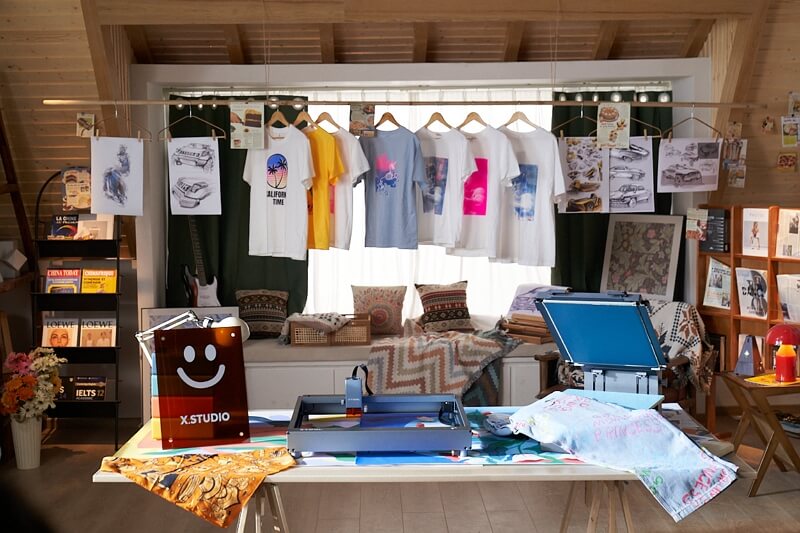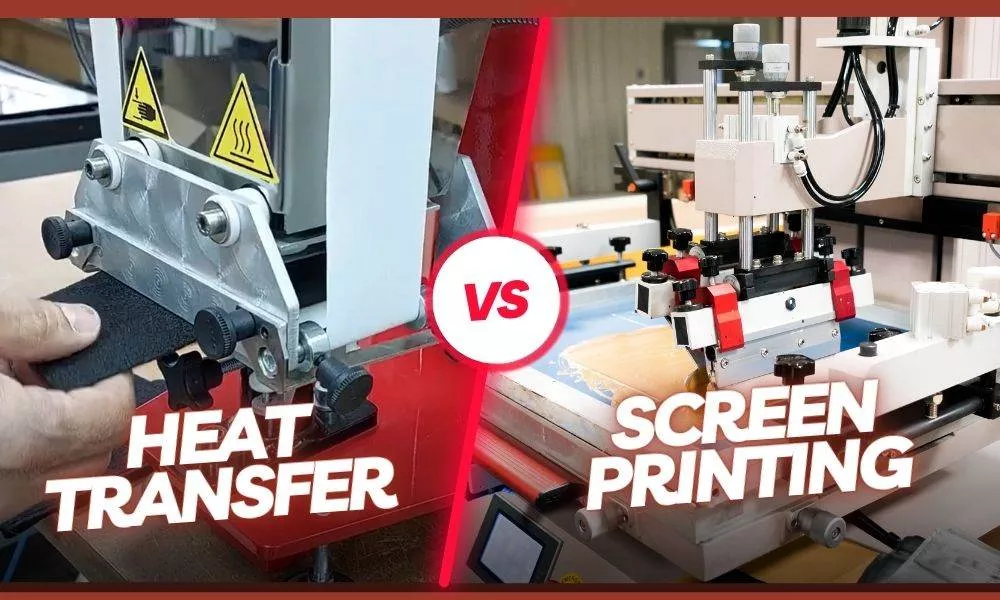Tx Tees Things To Know Before You Get This
Tx Tees Things To Know Before You Get This
Blog Article
What Does Tx Tees Mean?
Table of ContentsThe Buzz on Tx TeesThings about Tx TeesSome Ideas on Tx Tees You Should KnowTx Tees for BeginnersTx Tees Fundamentals ExplainedThe Greatest Guide To Tx Tees10 Easy Facts About Tx Tees Described
That brings your total to about $1,900 gross and shipping. Add up other costs, like the variety of energies it takes to run the shop and the expense of ink and emulsion per design. embroidery shop. Take the print below as an example. This is a one-color picture, so the price of ink per t shirt is around 20 cents.The solution must only be a few cents considering that you 'd just require to coat one screen for this job. Generally, printers attempt to make up to 45% profit on a print job.

With DTF, you can print a handful of tee shirts, or just one. Both screen printing and DTF have their specific niches in the globe.
The smart Trick of Tx Tees That Nobody is Discussing
The very best method to recognize? Ask around and see what print stores like your own are doing. custom screen printing. Try both out and see which you like much better
When you're choosing what kind of printing method to make use of for publishing your artwork styles on your garments, it is essential that you understand the distinctions in between these two techniques so you can take full advantage of results while reducing expenses. Display printing is the most typically made use of method for printing layouts on fabrics.
DTG printing is likewise referred to as spot or straight to garment printing due to the fact that it prints only what is required rather than making a screen as display printers do. https://txtees02.blog.ss-blog.jp/2024-03-28?1711617286. Screen printing functions by screen filler squeegee screen printing ink display mesh screen, after that moving the image to garment utilizing warm and/or stress
The DTG printer makes use of special dye-sublimation inks that are used into a pre-designed photo by a digital printing system. The inks become part of the textile, permitting for dynamic shades and exceptional information. It's also called area or direct to garment printing due to the fact that it publishes only what is required rather than making a screen as screen printers do.
Tx Tees Things To Know Before You Buy
It's much faster - you can print a fullcolor picture in mins, as opposed to hours for display printing. Second, there's no established time or costs included - you can print any type of layout you like, without having to produce a screen initially. Third, there's no waste - because display printers screen print one layout each time, they have to evaluate each shade independently.
The paper is really pricey and can only be utilized when. Once it's printed on, it needs to be disposed of. - The preliminary purchase cost is less than the in advance investment of DTG printers- You can print multi-color layouts one screen at once rather of having to print each shade individually like DTG printing.

Tx Tees for Dummies
Instead of using screen mesh as screen printers do, dye sublimation printers make use of laser technology to move your photos onto garments or paper. A warm process transfers the color from its solid-state straight right into the gas phase which subsequently merges it onto fabric substrates when they are quickly warmed to heats under high pressure.
Sublimation printing is green. It makes use of much less water than screenprinting, and due to the fact that it doesn't entail making use of unsafe solvents, it's risk-free for all sorts of clothing. The dye sublimation inks are also odor free when treated, unlike display printers that make use of unsafe chemicals during the screen printing process that leave behind an undesirable odor.
They also conserve cash on expensive tools like exposure systems because dye sublimation printers do not require a UV exposure unit or a flash cure stove that is generally made use of in display printing (screen printer). What is straight to garment printing (DTG Printing)? DTG printing is an electronic screenprinting procedure that publishes directly onto material making use of specialized inkjet printers
Tx Tees - Questions
DTG printing uses several benefits over typical screenprinting, including the capability to print photo top quality images, higher color vibrancy, and the Homepage capacity to publish layouts on darker textiles. DTG printers work by heating up the textile ink till it becomes a gas. The gas after that permeates the fabric, bonding with the fibers to develop a permanent print.

Display printers merely prepare their screen after that begin printing till they run out of product or ink.- There is a large range of knowledgeable display printers throughout the world, which can be helpful for novices. - It's a slower process - display printers usually need to await the ink to completely dry prior to they can publish the following color- Display printers call for hands-on labor, so there's a greater discovering contour and it takes longer to generate a high-grade design- Display printing isn't as exact as DTG printing, so you might get some "blood loss" of shades from one part of the photo onto an additional if not done properly.
Facts About Tx Tees Revealed
Rather of utilizing screen mesh as screen printers do, dye sublimation printers make use of laser innovation to transfer your pictures onto garments or paper. A warm process moves the color from its solid-state straight into the gas stage which in turn merges it onto textile substratums when they are quickly heated to heats under high pressure.
Sublimation printing is green. It uses less water than screenprinting, and since it does not entail making use of damaging solvents, it's safe for all kinds of apparel. The dye sublimation inks are likewise odor-free when healed, unlike screen printers that utilize dangerous chemicals throughout the display printing process that leave behind an undesirable smell.
They additionally conserve cash on costly tools like direct exposure devices because color sublimation printers don't call for a UV exposure device or a flash treatment stove that is commonly utilized in screen printing. What is direct to garment printing (DTG Printing)? DTG printing is an electronic screenprinting process that publishes directly onto material utilizing specialized inkjet printers.
The smart Trick of Tx Tees That Nobody is Discussing
DTG printing uses numerous advantages over typical screenprinting, including the capability to print photographic top quality photos, better shade vibrancy, and the capacity to publish layouts on darker textiles. DTG printers function by heating the textile ink till it becomes a gas. The gas then permeates the fabric, bonding with the fibers to create a long-term print.
Report this page